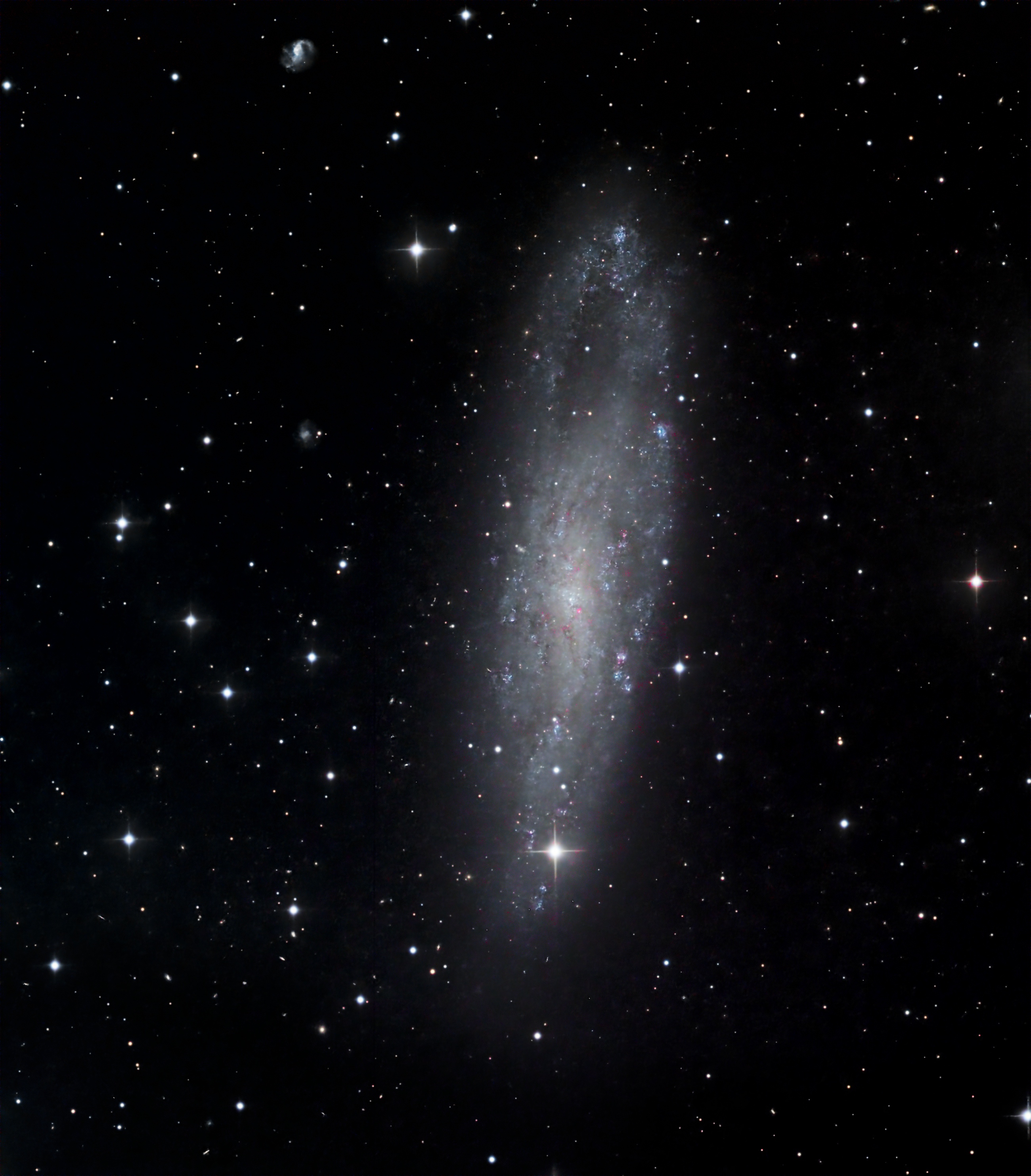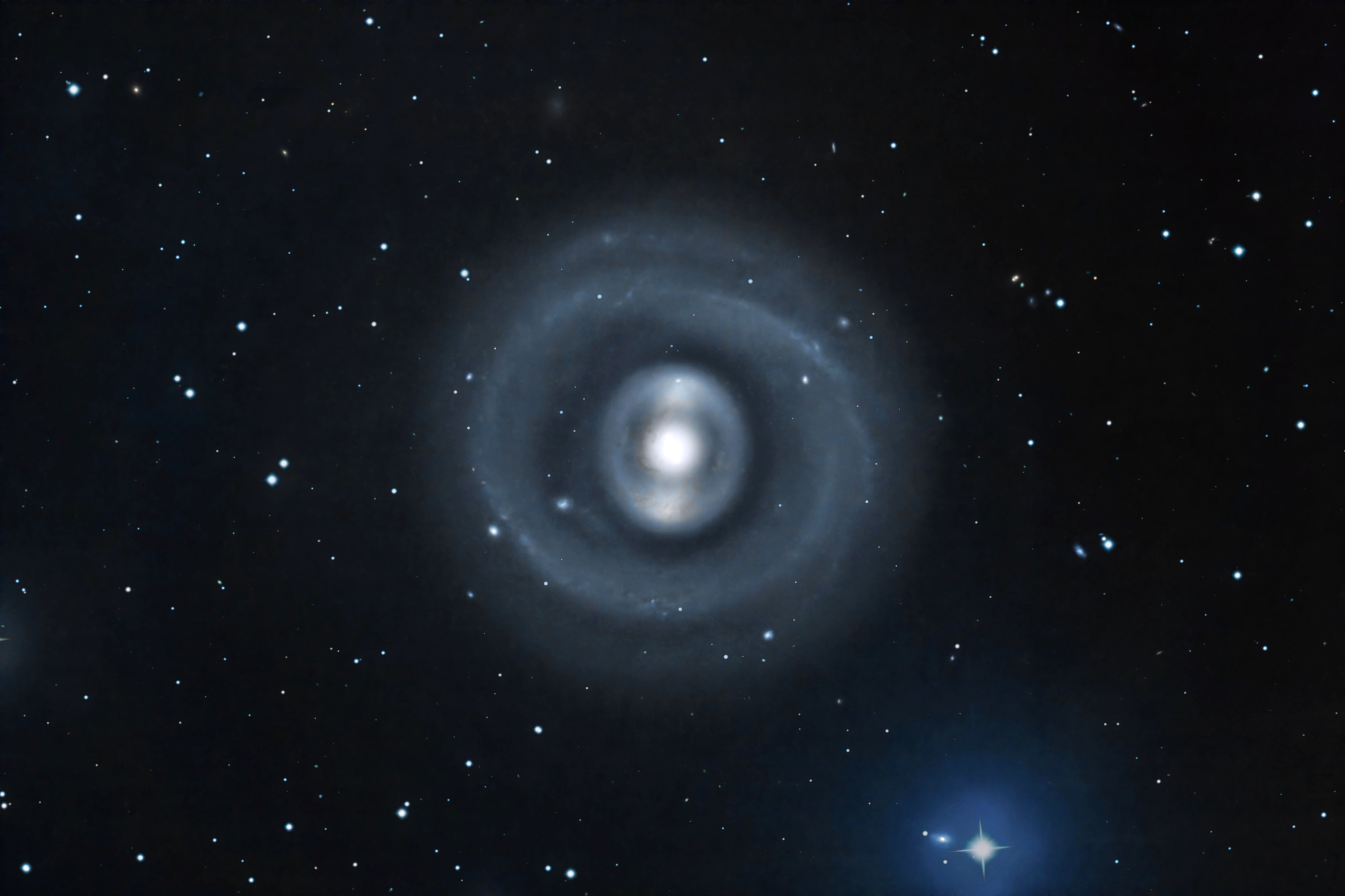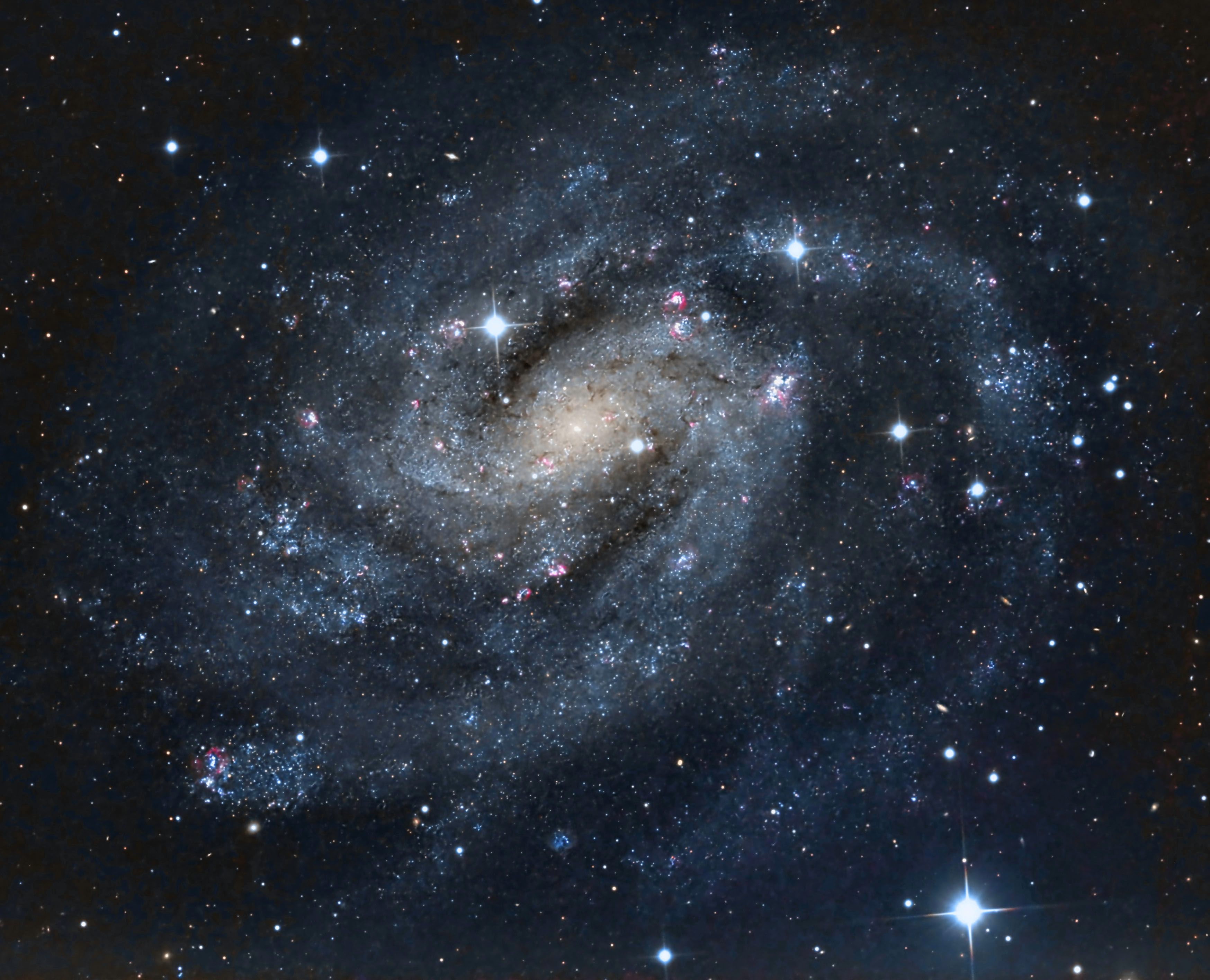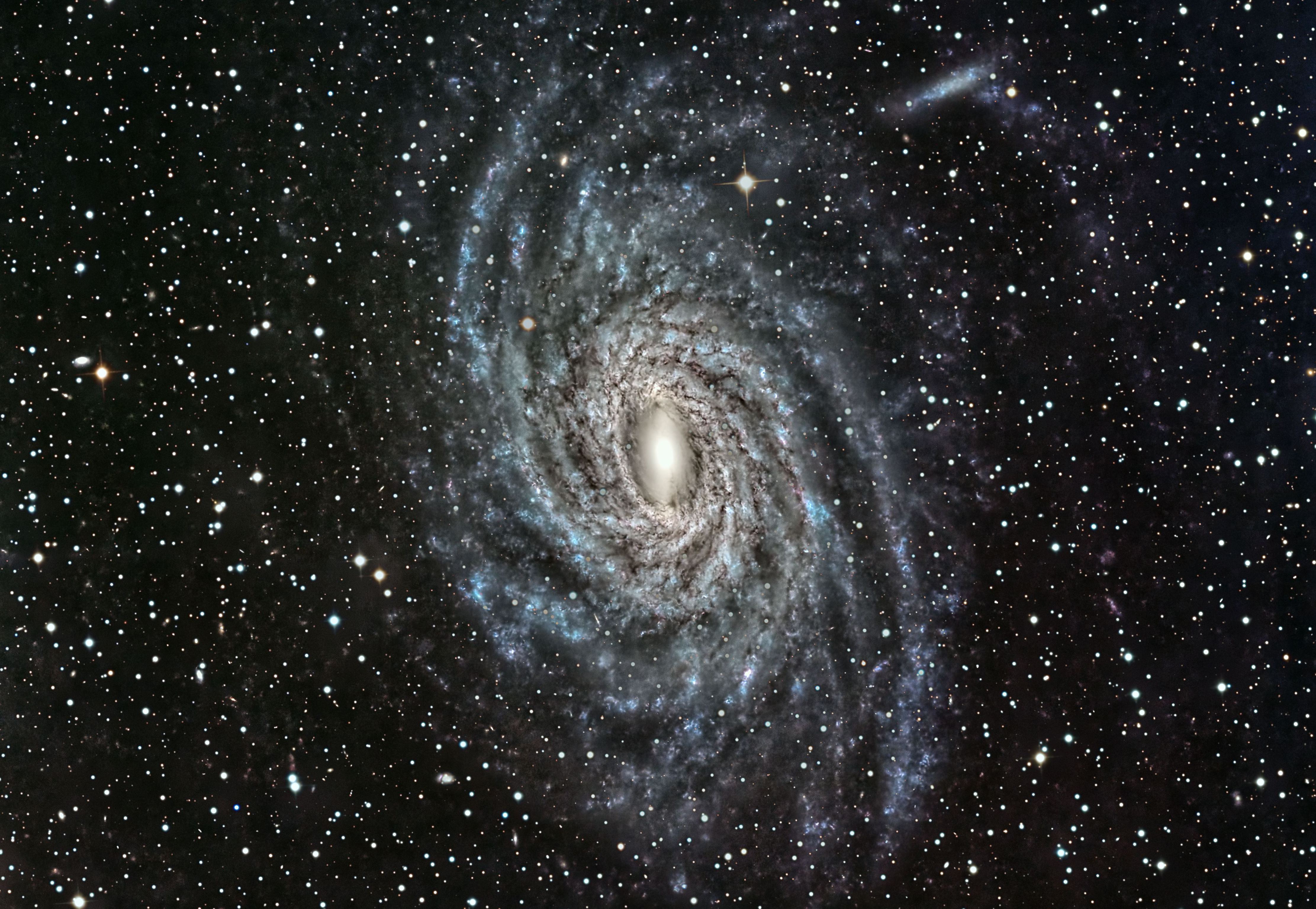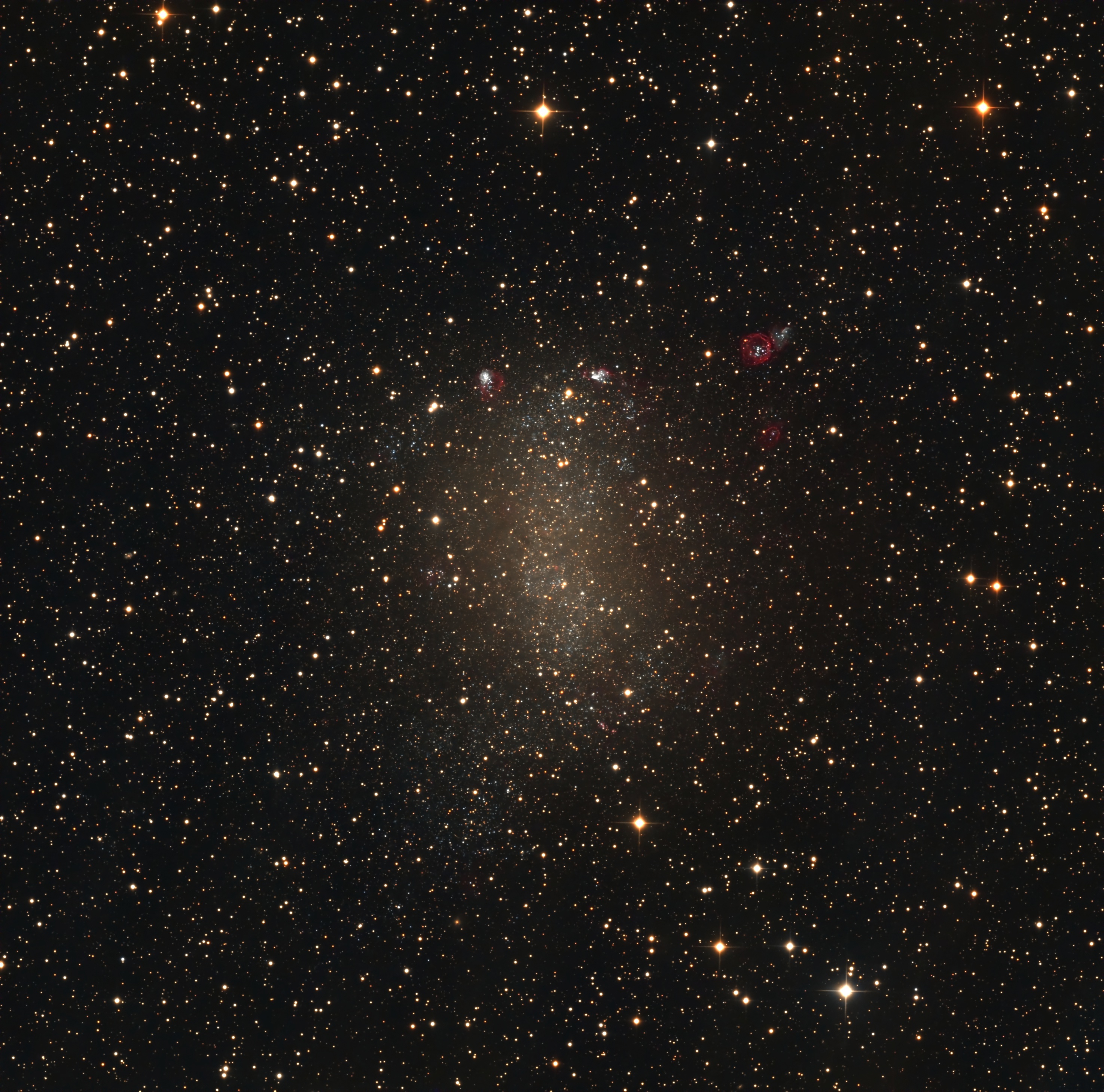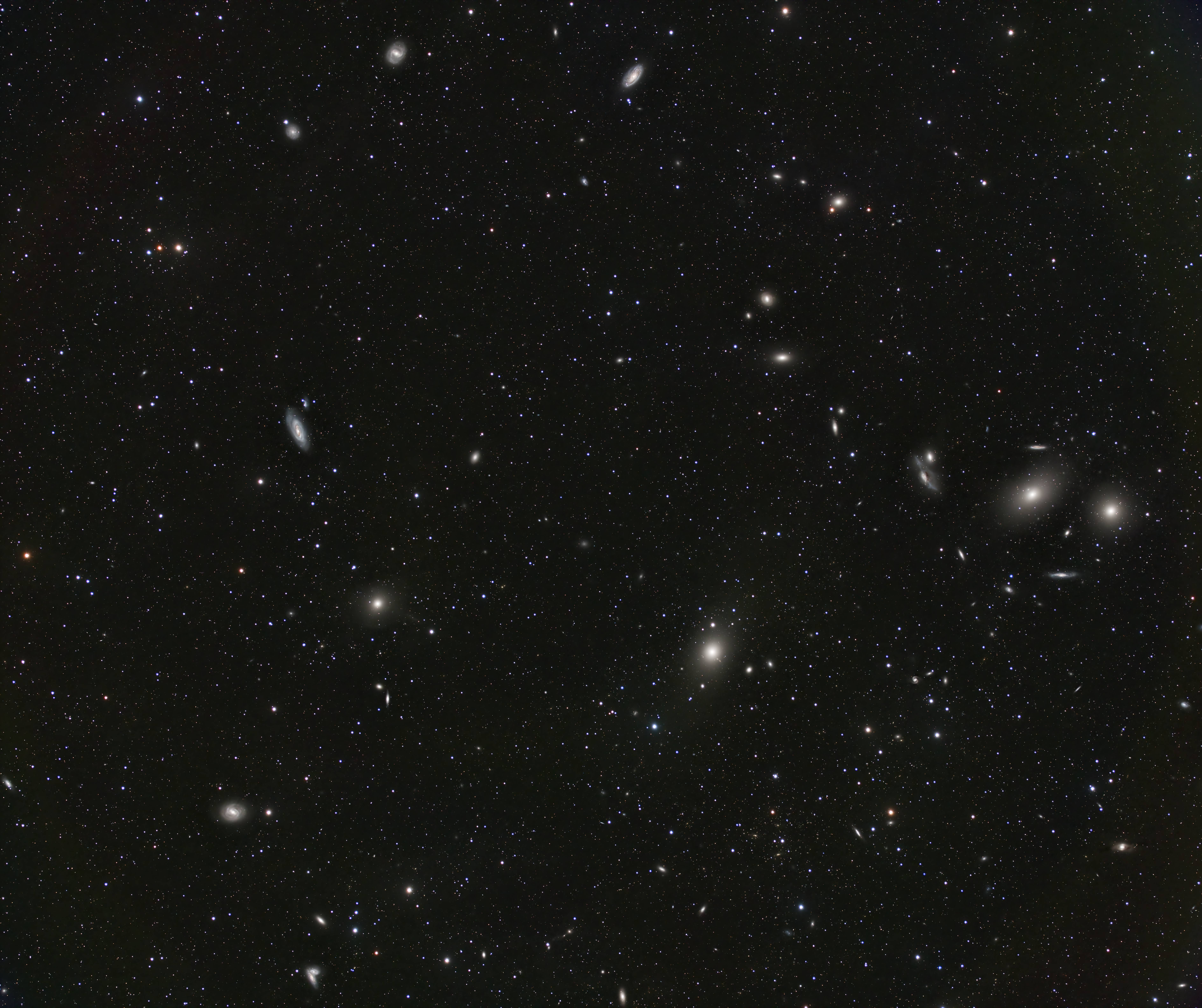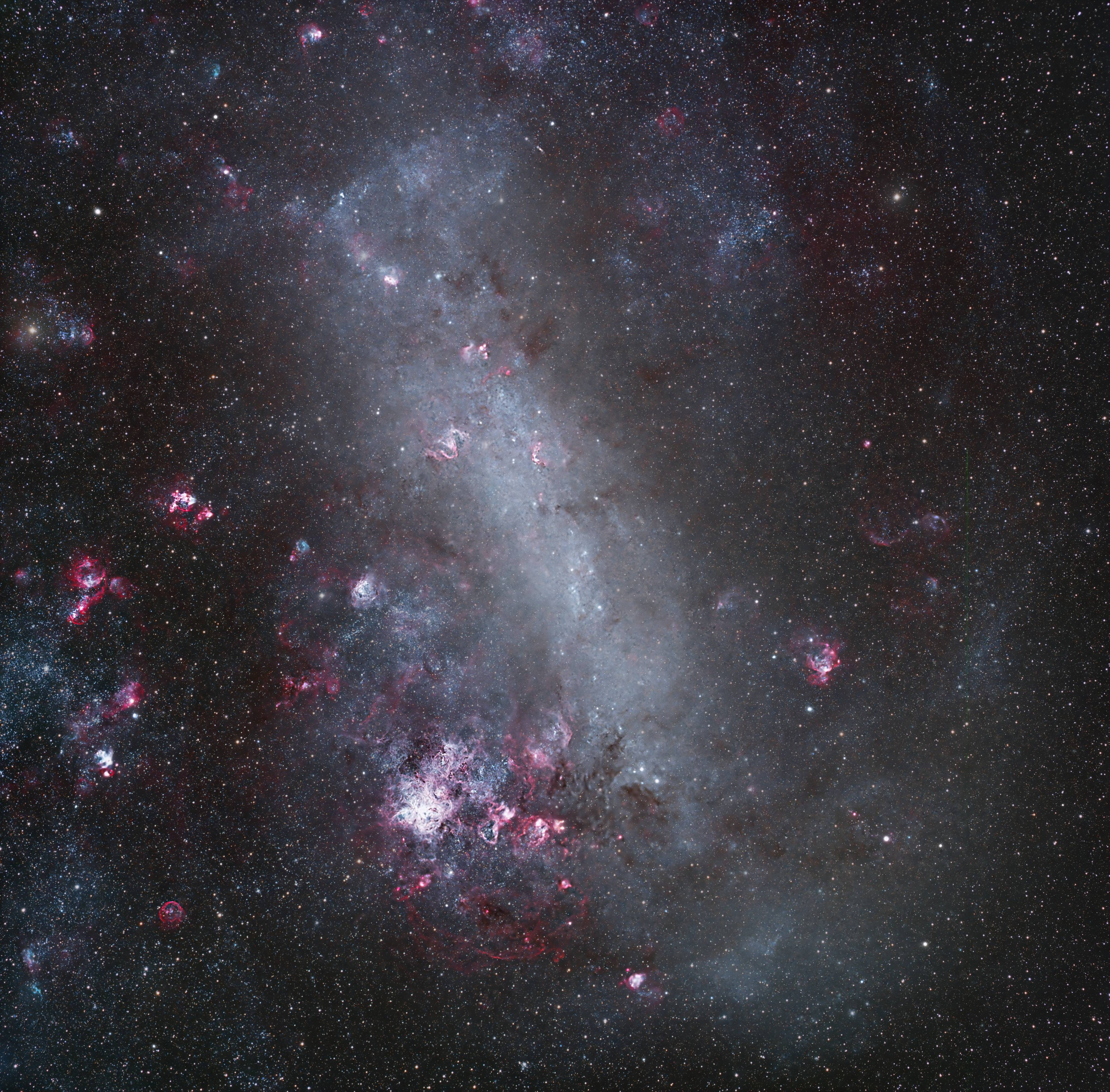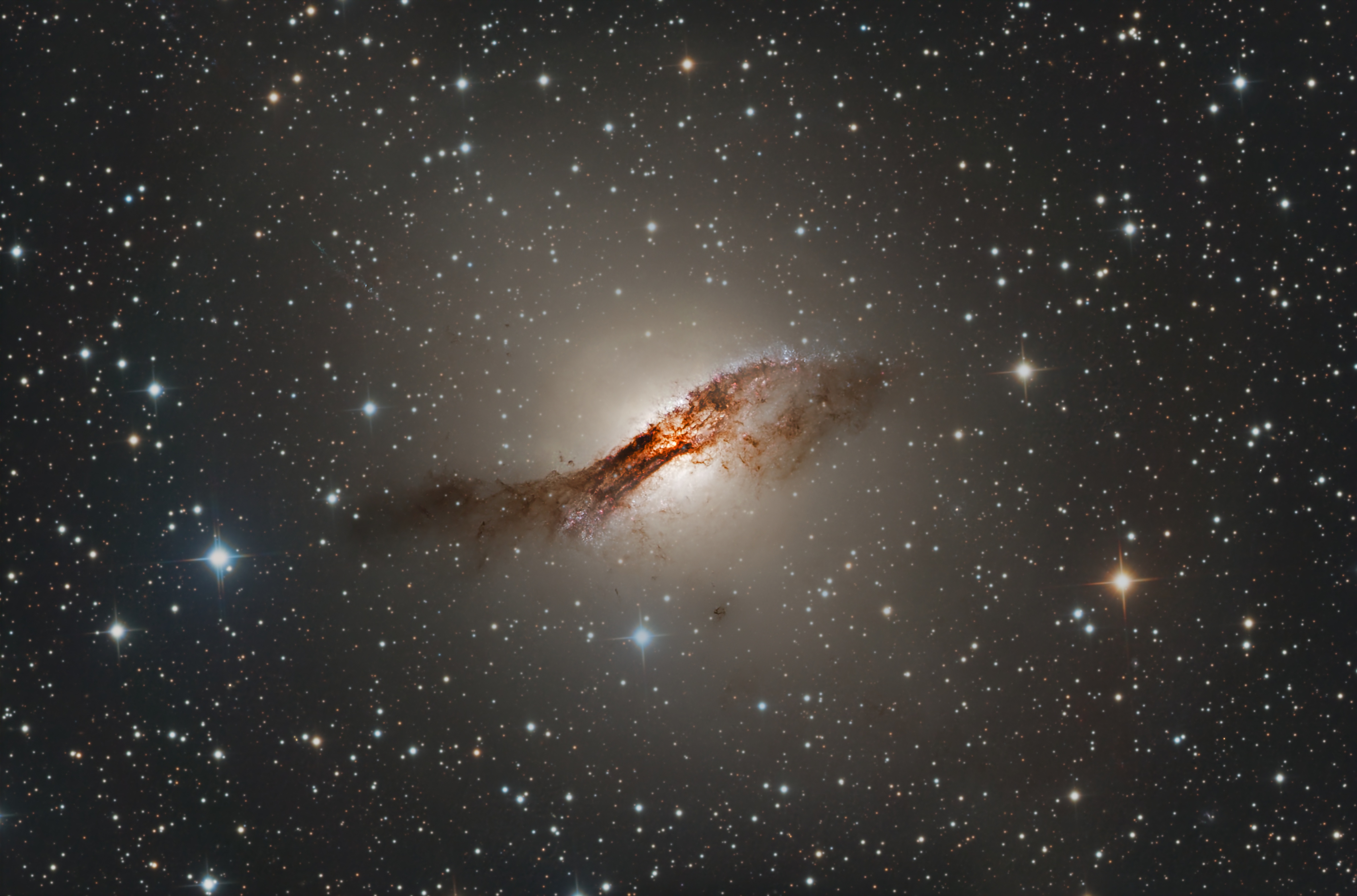NGC 6744
This galaxy lies about 30 million light-years away in the
southern constellation of Pavo and is about 170,000
light-years across. it is an intermediate galaxy which
means that is in-between a barred and an unbarred galaxy
(the bar stretching across the center of the galaxy.
Image processed by Ron Yelton, original data from
Telescope Live
|
NGC 247
In the southern constellation of Cetus lies NGC 247. Cetus
is the sea monster that both Perseus and Hercules were to
slay. Perseus saved Andromeda from Poseidon's wrath when
he killed the monster. it is also one of the 12 Zodiac
Constellations. it lies outside the galactic plane which
leaves it unobstructed by dust and gas in the Milky Way.
Note the far distant galaxy PGC 834794 in the upper-left.
Image processed by Ron Yelton, original data from
Telescope Live
|
NGC 1291
NGC 1291 is what is called a Ring
Galaxy. its outer ring is is still producing new stars at
a slow rate. Even though it has an unusual inner bar, it
is classified as a lenticular galaxy. it also has a large
central bulge. It is an early-type galaxy which means that
it has a lot of old globular clusters, 65% of which are
metal-poor. The rest are newer, metal-rich globular
clusters. it faces us almost nearly face-on and lies about
33 million light-years away.
Image processed by Ron Yelton,
original data from Telescope Live
|

